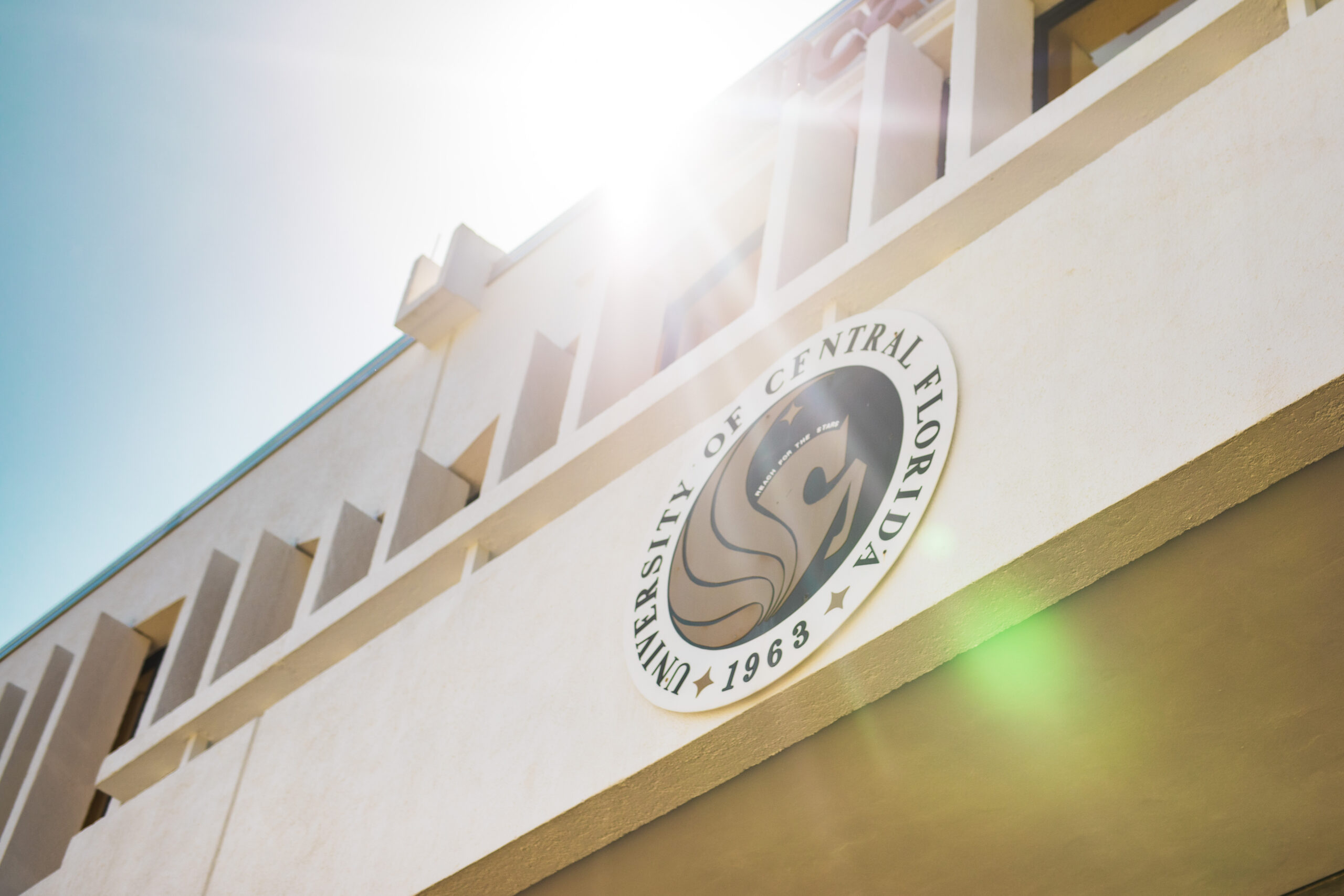UCF Researchers Create Water-repellent Nanomaterial Inspired by Nature
A team of researchers at the University of Central Florida have created a new nanomaterial that repels water and can stay dry even when submerged underwater.
The discovery could open the door to the development of more efficient water-repellent surfaces, fuel cells, and electronic sensors to detect toxins. The work is documented in the cover story of this month’s Advanced Materials journal.
Debashis Chanda, a professor at UCF’s NanoScience Technology Center, led the team that created these novel superhydrophobic films and coating from nanomaterials. He was inspired by the nature and evolution of certain plants and biological species
“Being water repellent or hydrophobicity is nature’s tool to protect and self-clean plants and animals against pathogens like fungi, algae growth, and dirt accumulation,” Chanda says. “We took our cues from the structure of a lotus leaf and synthesized nanostructured materials based on molecular crystals of fullerenes.”
Fullerenes (C60 and C70) are built by bundling carbon molecules — the basic building block of the universe. Carbon comes in various forms. In special circumstances, 60 or 70 such carbon molecules can bond together to form a cage-like closed structure, called fullerenes. These cages can stack on each other to form tall crystals called fullerites.
By placing a drop of a gel created from fullerites on any surface, a super water-repellent state is triggered, Chanda says. The unique cage-like structure of the gel doesn’t interfere with the original material being treated, which means they preserve their unique functional properties. That means the new super surface can potentially be used for splitting water, bacterial disinfection, hydrogen generation, or electrocatalysis — all of which can be generated in fluid environments.
“For example, the new gel makes splitting electrocatalysis easier, which could lead to more efficient fuel cells,” Chanda says. “The same gel can lead to better electron acceptors, which are key in developing highly sensitive detectors and sensors for toxic gases. There is a lot of potential. It is quite exciting.”
The majority of previously reported hydrophobic surfaces have been achieved by designing microscopic patterns that involve complex lithography or etching processes that cannot be performed on all surfaces. And not all hydrophobic surfaces previously developed remain dry when submerged underwater for more than a few minutes at a certain water depth.
“We found that fullerite films display extreme water repellency regardless of the direction of water flow and even under a continuous flow of water over them,” Chanda says. “Even when they are submerged at 2 feet of water for several hours, the films remain dry. We even found that they can capture and store gases underwater in the form of plastrons — a form of trapped bubbles mimicking the miraculous alkali fly of California’s Mono Lake.”
Rinku Saran, a post-doctoral fellow in Chanda’s lab, and lead author of the study says he’s excited about the potential.
“Because these superhydrophobic surfaces are created in a very facile and easy process using pure carbon fullerenes we anticipate they can be exploited in many experiments and real-life applications,” Saran says.
The other co-authors are David Fox, a doctoral student at NanoScience Technology Center, and Professor of Chemistry Lei Zhai.
Chanda has a joint appointment in UCF’s Department of NanoScience Technology Center, the Department of Physics, and the College of Optics and Photonics. Chanda received his doctorate in photonics from the University of Toronto and worked as a postdoctoral fellow at the University of Illinois at Urbana-Champaign before joining UCF in 2012.
Share This Article

UCF Women’s Club Honors 3 Graduate Students with Prestigious Sheila B. Somerville Scholarship
Financial support is often the cornerstone of academic success, and for many students, scholarships open the door to higher education. Beyond easing financial stress, these awards provide recognition, motivation, and a...
Latest News

UCF Launches 1st Planetary and Space Sciences PhD Program in Florida
As SpaceU, UCF is pushing the boundaries of exploration by launching a groundbreaking new doctoral program in the planetary and space sciences. Now, aspiring researchers can apply to the inaugural cohort of...

UCF Fulbright Awardees Bring Their Passions to a Global Scale
Each year, the Fulbright Program offers opportunities for American students to conduct research, teach English, or pursue graduate study abroad. One of the most prestigious international exchange programs in the...

Unleash Opportunities with a UCF Graduate Degree
A graduate degree has the power to unleash opportunities by expanding careers, opening doors to new fields, and increasing lifetime earnings. According to the U.S. Bureau of Labor Statistics (2024),...

UCF Rosen College Ranks No. 1 in the World for Hospitality Education for 2025
One of the most anticipated theme parks in the world is about to open its gates — and right next door, the No. 1 hospitality and hotel management school on...